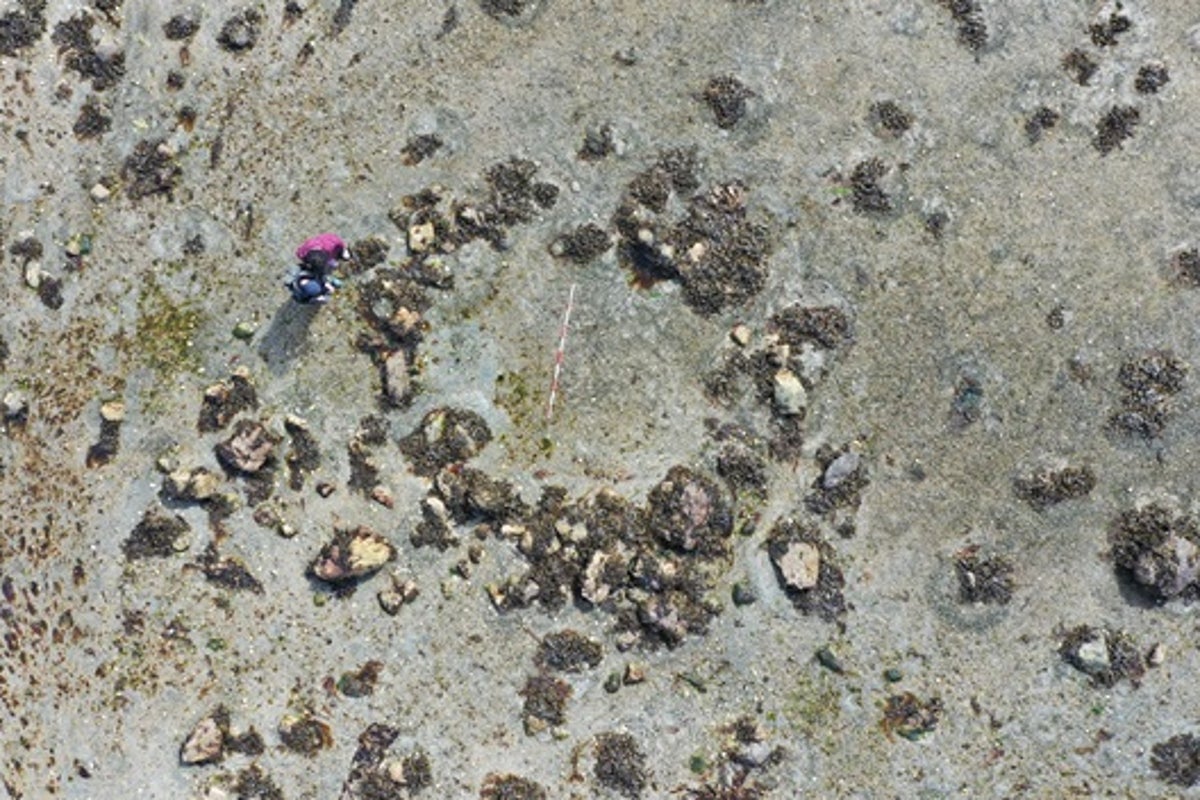
Strange stone circles found at the Isle of Skye could be evidence of the earliest human occupation of Scotland’s frigid northwest, pushing survival boundaries, a new study says.
The research sheds more light on the “ultimate adventure” undertaken by early humans to reach the “far end” of Scotland, say archaeologists from the University of Glasgow.
The enigmatic circles, each between 3 and 5m (10 and 16ft) in size, as well as stone tools found at the site, have been dated to around 11,500 – 11,000 years ago – an era known as the Late Upper Palaeolithic (LUP) period.
This provides proof of what was likely a large concentration of a pioneer human population at this Scottish site, which appears to be below modern sea level.
The new findings, published in The Journal of Quaternary Science, indicate that early humans from this period ventured much further north than previously believed.
“This is a hugely significant discovery which offers a new perspective on the earliest human occupation yet known, of north-west Scotland,” said archaeologist Karen Hardy, who led the study.
During this period, when much of west Scotland was buried under ice, nomadic hunter-gatherers from northern Europe crossed Doggerland, an area that is now covered by the North Sea, to occupy Skye, researchers say.
“The journey made by these pioneering people who left their lowland territories in mainland Europe to travel northwards into the unknown, is the ultimate adventure story,” Dr Hardy said.
“As they journeyed northwards, most likely following animal herds, they eventually reached Scotland, where the western landscape was dramatically changing as glaciers melted and the land rebounded as it recovered from the weight of the ice,” he said.
On reaching the Isle of Skye, these early people crafted tools from stone found locally.
They chose to settle down at the place due to its good access to coastal and riverine resources, as well as natural materials like ochre which were highly valued by ancient cultures, researchers say.
The new study reflects an early human presence in the extreme northwest of Europe, pushing boundaries of survival in frigid conditions.
Here, the early humans lived in a fragmented, fluctuating, and volatile environment amid melting glaciers, mountains, and oceans – vastly different from the low-lying environments of the northwestern edge of the Great European Plain.
The island’s early population likely originated in the mainland of northwest Europe, “crossed Doggerland into what is now Britain, and eventually reached the far north of the Isle of Skye”, according to the study.
“Together with the new stone alignments and several other nearby sites, this region now contains more evidence for the LUP than anywhere else in Scotland,” scientists wrote.
Source: independent.co.uk


